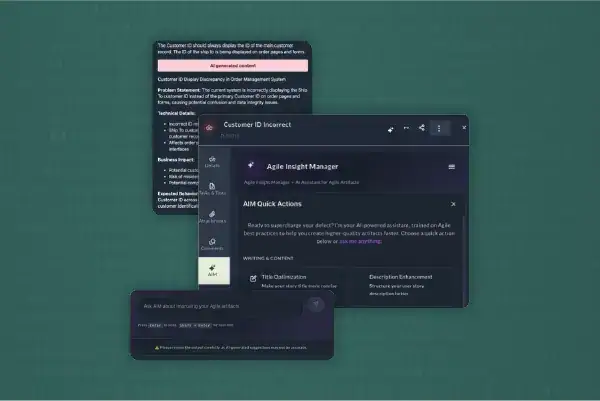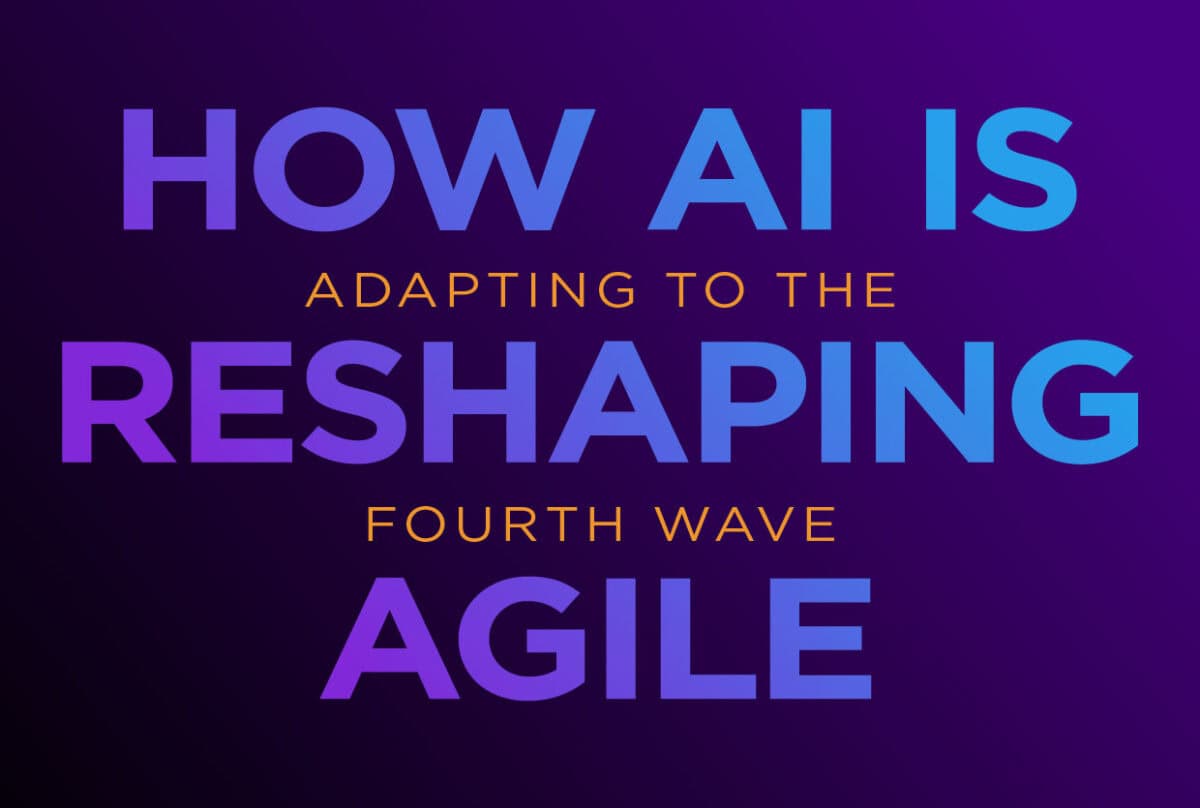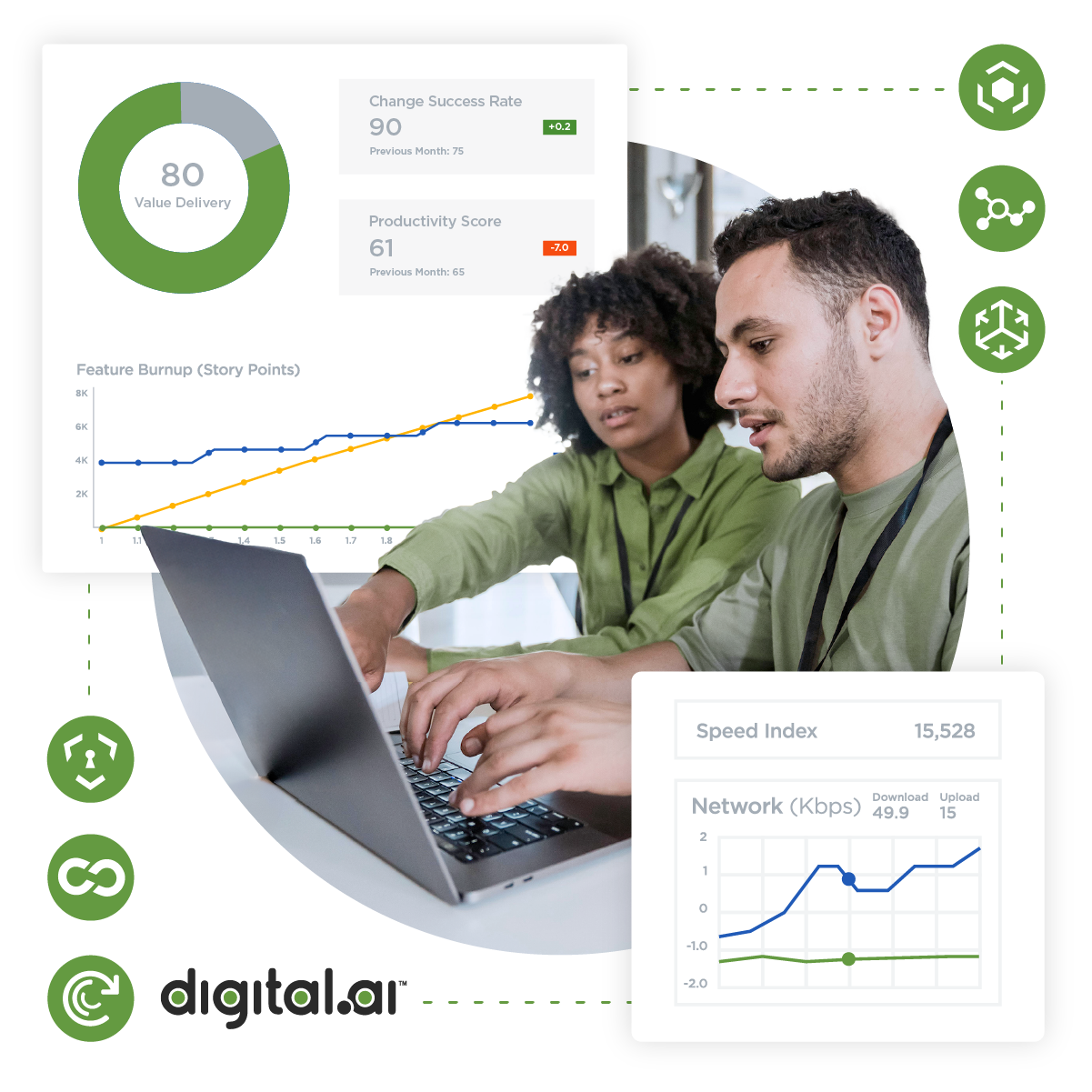Table of Contents
Related Blogs
Productivity gains help individuals. Agentic AI is what strengthens alignment, decisions, and outcomes.
Talk to any transformation leader after they’ve rolled out AI and the story doesn’t change much. Teams get faster, output goes up, and some of the busywork goes away. But the hard parts of running the business stay exactly the same.
According to McKinsey’s State of AI 2025, only 39 percent of organizations are seeing meaningful financial impact at the enterprise level. This isn’t surprising. Inside most enterprises, AI has delivered exactly what you’d expect: individual productivity gains. People write faster, junior team members ramp up quicker, and talent gaps feel a little less painful. All of that is good and frankly needed. Personal efficiency delivers modest gains, but that’s where it stops. McKinsey’s data shows that these improvements aren’t translating into enterprise-level ROI because the structural issues that shape planning and delivery never change.
And that’s exactly where the breakdown begins. AI entered most enterprises at the feature level, not the system level, so the improvements stay local instead of shaping how the broader work actually runs.
Discover how Agentic AI can strengthen alignment across your enterprise.
Why Feature-Level AI Doesn’t Scale Enterprise Value
Enterprises have adopted AI the same way they adopt every new technology: incrementally, experimentally, and usually in the form of a feature quietly added to an existing tool. A pilot here. A proof of concept there. Something small that felt safe — a perfectly reasonable first step.
Even when AI is built directly into a product, its reach is limited. Sure, it improves local efficiency, but it doesn’t touch the cross-team planning, prioritization, or sequencing decisions where enterprise-level value actually forms.
So, AI ends up orbiting the workflow rather than influencing it. The flow of work still depends on people to catch issues, interpret signals, flag misalignment, and pull decisions forward. The ISG State of Enterprise AI Adoption 2025 report makes this pattern easy to see. Thirty-one percent of enterprises have moved pilots into production, but only 25 percent are getting the return they expected.
The Assistance Ceiling: When Help Stops Helping
There’s a ceiling to what AI assistance can deliver, because it depends entirely on human initiation. Someone has to notice a need. Someone has to prompt for help and know what to ask. Someone has to understand the surrounding context before deciding what to do with the output. And that’s exactly where large enterprises struggle.
Our 18th State of Agile Report backs this up. Organizations report more moving parts than ever. Toolchains keep expanding. Dependencies grow more tangled. And teams say they spend more time coordinating than delivering. In that environment, putting the burden on humans (to see every risk, catch every dependency, and keep every thread aligned) just doesn’t scale.
And yet that’s exactly the kind of assistance reinforced by AI when it sits outside the workflow. It can generate test cases, but it has no idea that yesterday’s code merge created a new risk. It can help with a sprint plan, but it can’t see that a customer escalation changed the priority landscape. It can recommend a release workflow, but it has no awareness of compliance windows or business deadlines.
Gartner’s outlook reflects this tension. By 2026, they expect 40 percent of enterprise applications to include task-specific AI agents, up from less than five percent today. The shift toward agents is a recognition that assistance alone doesn’t match the pace at which priorities change or risks form inside complex delivery environments.
Assistance without context behaves the same way disconnected tools behave. It increases activity without increasing awareness. And that’s how enterprises accumulate what we call intelligence debt: too many intelligent tools that can’t learn from one another, can’t share context, and ultimately make the work harder to manage at scale.
Embedded AI: Where Intelligence Finally Meets Impact
If you look across every report, the story is the same. The returns aren’t showing up because intelligence is scattered everywhere except the place where value is actually created. Productivity gains live in one part of the business. Insights live in another. Decisions live somewhere else entirely. That fragmentation is what builds intelligence debt, and it’s the reason AI investments aren’t translating into meaningful financial impact.
Forbes Technology Council makes a similar point: Real transformation happens when AI is embedded at the point of work; in the places where decisions, tradeoffs, and adjustments actually occur. That includes the upstream planning moments, the downstream delivery checkpoints, and everything in between. When AI can influence how the system behaves, the business finally gets what task-level efficiency can’t deliver: coordinated decisions, fewer surprises, and plans that actually hold.
This is the distinction most teams miss. Embedded AI isn’t a feature or a helper. It is intelligence built into the system of work itself, where planning, sequencing, capacity decisions, and risk signals naturally converge. And when that intelligence becomes autonomous enough to interpret changes and respond on its own, you get the beginning of real agentic AI.
For example, picture a high-value initiative that depends on multiple teams. If one of those teams suddenly hits a capacity pinch, the system already understands interdependencies and planning structure. An agentic planning system can detect the impact immediately, highlight which downstream work is at risk, and surface the adjustment before anything slips.
And when AI moves into that space, the impact shifts immediately:
- It sees context. Embedded AI understands how plans, delivery patterns, constraints, and dependencies connect across teams. It isn’t guessing. It has access to the actual structure of the work, which is where enterprise value forms.
- It adapts while the work is moving. Because it already understands the context, it doesn’t wait for a human to ask. When priorities shift or risks appear, embedded AI detects the impact and surfaces the adjustment before the business feels it.
- It closes the gap between signals and decisions. Most enterprises already create the signals required to make better decisions. Agentic AI consumes those signals, understands how they relate to one another, and surfaces what matters at the point of work rather than leaving insight scattered across systems.
This is why placement matters for ROI. When intelligence sits at the decision points instead of on the sidelines, it stops being a productivity boost and starts being an operational advantage.
Why Agentic AI Matters Now
Once AI moves inside the flow of work, the conversation shifts from productivity to adaptability. And adaptability is the pressure point for enterprises right now; the 18th State of Agile Report makes this clear. Teams are struggling with drift: shifting priorities, changing constraints, and dependencies that move faster than people can reasonably track.
Delivery speed matters, but it isn’t what makes or breaks outcomes at the enterprise level. What actually drives financial impact is whether the organization can hold alignment long enough for plans, commitments, and investments to land the way they were intended.
This is where Agentic AI becomes essential. It keeps strategy, plans, and real-world conditions connected so leaders can trust that the decisions they’re making are grounded in the truth of what’s happening across the organization. Humans still handle the creative work, the customer work, and the judgment calls. What they can’t do is maintain real-time awareness of every dependency and ripple effect without help.
Agentic AI fills that gap by maintaining the awareness that teams have been trying to manage manually. It tracks what changed, what is affected, and what needs attention before a plan slips or a commitment breaks. That’s the difference between AI that boosts individual productivity and AI that actually shapes outcomes.
Where Digital.ai Agility Sage Fits
This is exactly the space Digital.ai Agility Sage was built for.
Sage is not a standalone assistant or a layer added on the side of the process. It was designed inside Digital.ai Agility’s planning and portfolio management system, which means it works with the same structures teams already use to make decisions: portfolios, dependencies, capacity, delivery patterns, and the constraints that shape real execution.
Yes, Sage helps teams move faster by generating better story details and reducing manual planning work. But its real strength comes from where it lives. Because it sits inside the workflow, it can interpret the same signals teams rely on and reflect changes as they happen. It understands how plans connect, where the friction points are, and how shifts in one area affect the rest.
That placement is what makes Sage the foundation for Agentic AI inside Agility. It gives the system context instead of guesses, awareness instead of fragments. Over time, it becomes the layer that helps organizations keep alignment intact while everything around is constantly moving.
Sage is a practical, grounded step toward the enterprise-level adaptability business leaders have been chasing for years, the kind that doesn’t just assist individual tasks, but truly shapes outcomes.

If you want to see how this looks in your own workflows, we can walk you through it.
Explore
What's New In The World of Digital.ai
The Real ROI of AI Starts Inside the Workflow
Productivity gains help individuals. Agentic AI is what strengthens alignment,…
The Fourth Wave is Already Here: What 18 Years of Agile Data Tells Us About What’s Next
For nearly two decades, Digital.ai’s State of Agile Report has…
Don’t Let Jira Dictate Your Future—Digital.ai Agility Puts You in Control
Atlassian has announced the end of Data Center products by…




